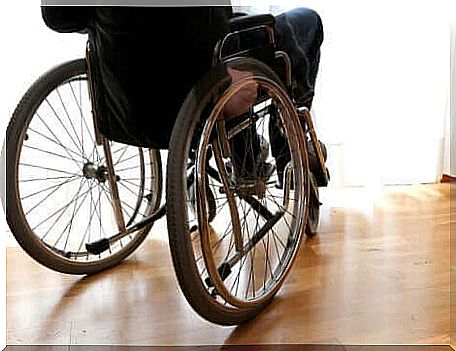The Different Types Of Multiple Sclerosis
There are different types of multiple sclerosis, they are all serious. Their diagnosis and treatment is complex because each professional must adapt the therapeutic program individually.

Multiple sclerosis is a serious illness with a fatal outcome. Unfortunately, there are different types of multiple sclerosis, and it is not always easy to identify them and tell them apart from each other.
It is a chronic pathology that has no cure. Therefore, being diagnosed is worrying news that defeats all expectations for patients and their families.
To its complexity, we must also add that the clinic has cataloged different forms of the disease, all of which are serious. If the professional treating team is not able to find the type of disease in question in each patient, the start of the appropriate treatment is delayed.
As a neurological pathology, it is a very common cause of disability since it tends to appear in young adults, generally under 40 years of age. These are patients who have to give up their studies and work in most cases.
Moreover, all types of this disease are autoimmune. In other words, the body itself attacks its own components. In this case, it makes antibodies that destroy myelin, a substance that covers the nerves. Thanks to myelin, the transmission of nerve impulses is possible. Its destruction damages neuronal connectivity.
Symptoms of multiple sclerosis
Almost all types of multiple sclerosis share the same symptoms. What generally varies is the form of presentation as well as the type of evolution over time.
The main signs of the disease are manifested in the musculoskeletal system. This is because patients experience weakness in their limbs, they have difficulty walking and lose their balance. The arms also become weaker, resulting in sudden falls of objects, such as cups or glasses.
On the other hand, cramps are also a common symptom, accompanied by pain in the muscle which involuntarily contracts. Even if the person wants to soften the contracted area, they cannot.
In addition to cramps, the affected muscles are subject to tremors and spasms. It goes without saying that this considerably hinders the activities of daily living. In other words, the disease compromises the quality of life.
Another affected system is the digestive system. The different types of multiple sclerosis cause constipation and urine retention. This takes place because the nerves which should transmit the information of peristaltic movement are without myelin.
Finally, other organs that are seriously affected are the eyes. Some patients start off with the symptom of double vision, before experiencing trouble or weakness in the limbs. In addition to double vision, rapid and uncontrolled movements of the eyeballs can occur.

Types of multiple sclerosis
Disease diagnostic protocols have identified four types of multiple sclerosis:
- RRMS: this is relapsing-remitting multiple sclerosis. It is so named because it alternates between periods of acute flare-ups with other symptoms, then other phases of several months without signs of the pathology. The onset of relapses is often linked to a new neurological area affected by the lack of myelin. It is the most common type of multiple sclerosis of the four.
- MS-MS: Secondary progressive multiple sclerosis is one that begins as RRMS, but progresses to a form of permanent symptoms, without periods of rest.
- MS-PP: this is primary progressive multiple sclerosis. There are almost no periods without symptoms and it starts gradually from zero, without progressing from the MS-RR form. This is what differentiates it from the previous type.
- RP-MS: This is the least common type of multiple sclerosis and is called relapsing-remitting multiple sclerosis. The acute flare-ups overlap.

Diagnosis and treatment
The International Scientific Community has agreed that the McDonald’s criteria are the standard for diagnosing all types of multiple sclerosis. Then you have to wait for the course of the disease to know what type it is.
Moreover, the treatment is similar for all. For acute attacks with signs of progressive loss of myelin, corticosteroids are given. Regarding the interval periods, drugs modifying the course are generally prescribed.
In addition to drugs, rehabilitation through various therapies focuses on skills that are gradually lost. In this process, kinesiologists, speech therapists and occupational therapists are involved.
The different types coincide in terms of severity
Although it has different types, the disease is still serious. Its development is chronic and progressive, with the loss of functions over time. No means currently exist to treat it, although considerable progress has been made in pharmacological control.









